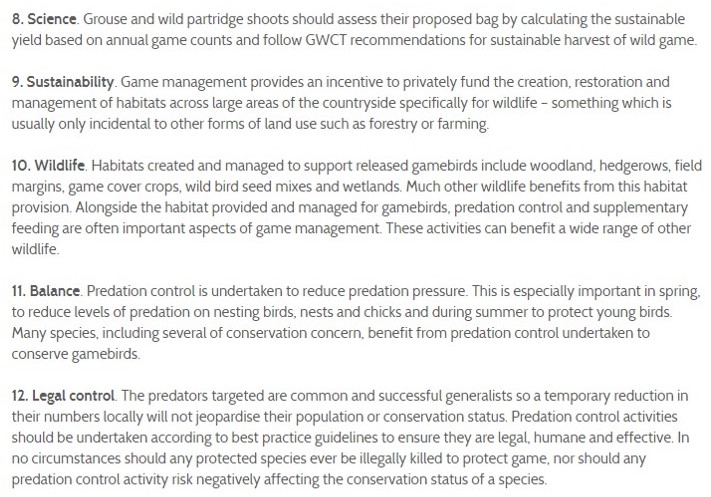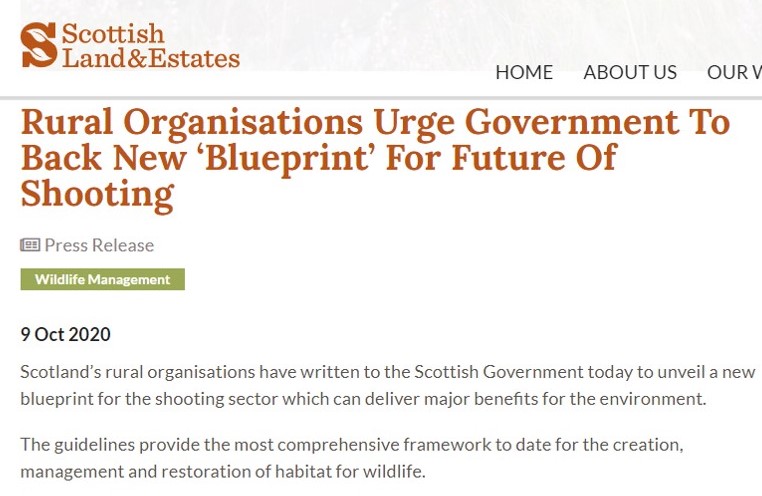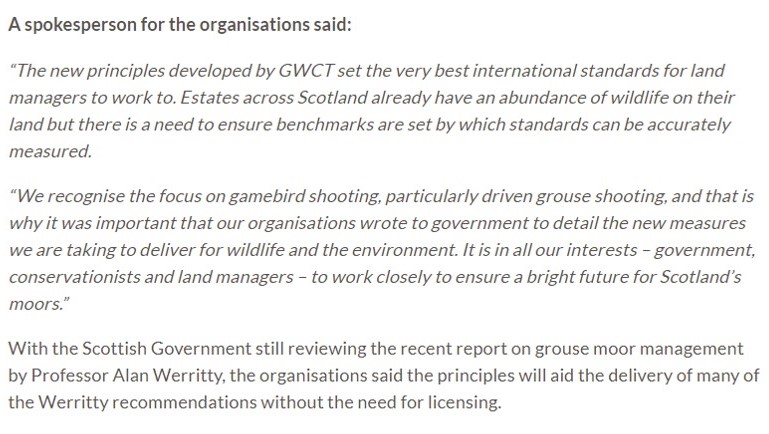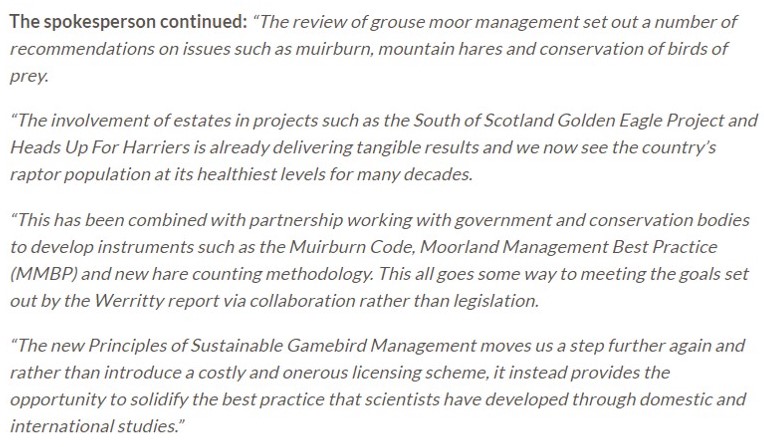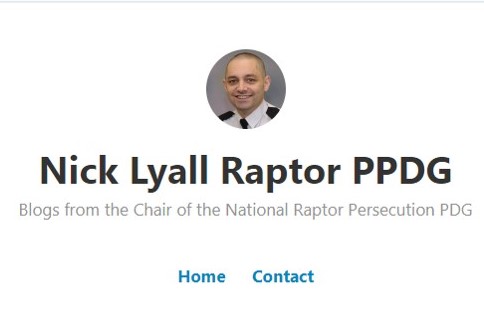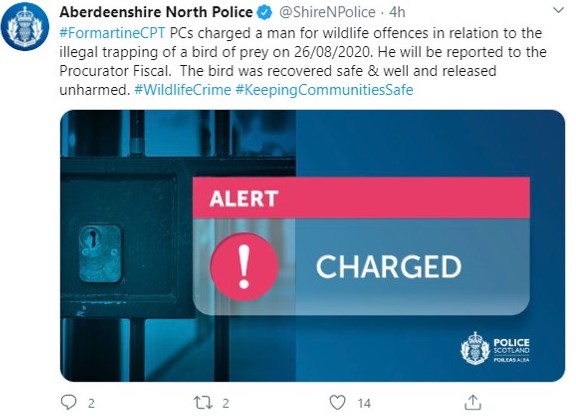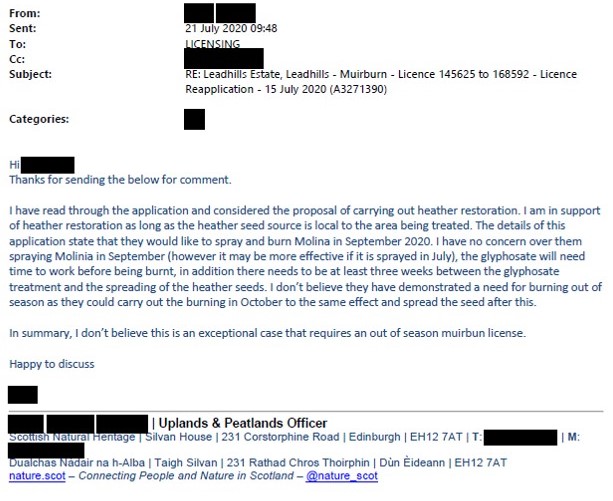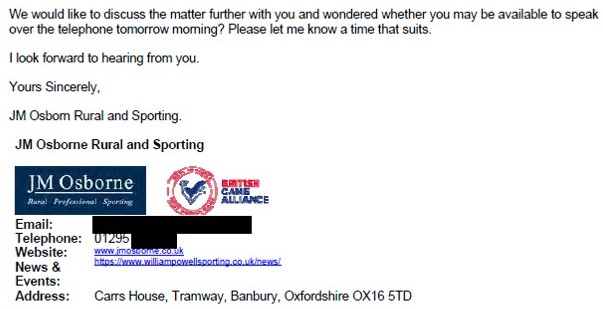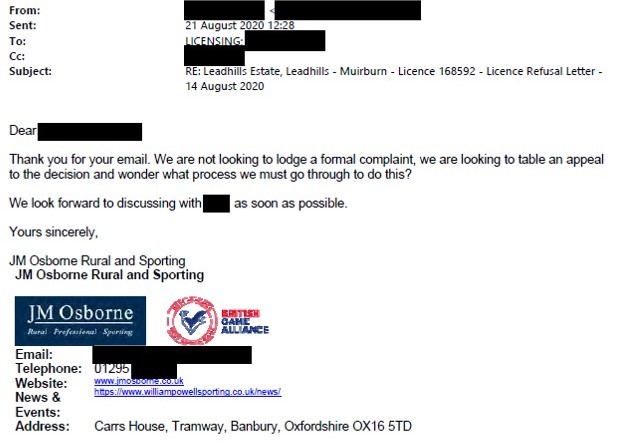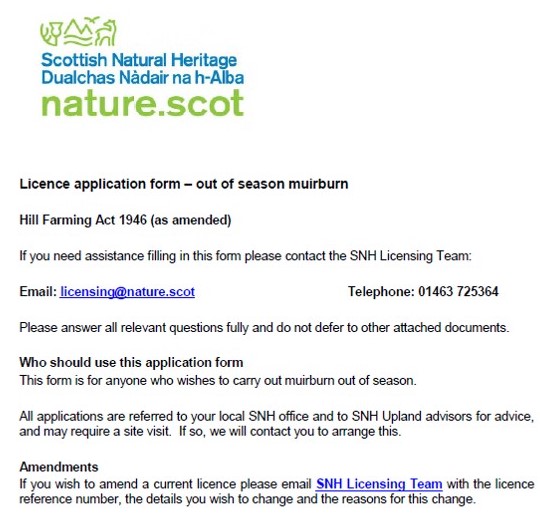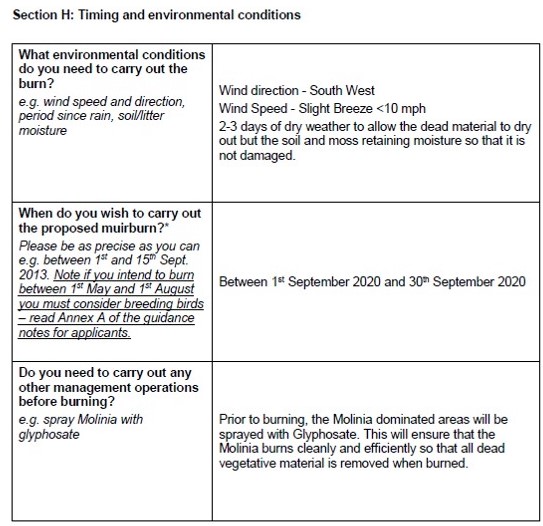RSPB press release (1 October 2020)
Mayors, councils, local communities, and RSPB unite in support of the call to urgently ban peatland burning on grouse moors.
The RSPB is today calling on Government to implement an immediate end to the burning of precious peatlands on moors managed for grouse shooting. The call, which comes on the first day of this year’s burning season, is being supported by city mayors, councils, and local communities. A ban is also supported by a wide range of environmental NGOs.
[Routine burning on a Yorkshire grouse moor. Photo by Ruth Tingay]
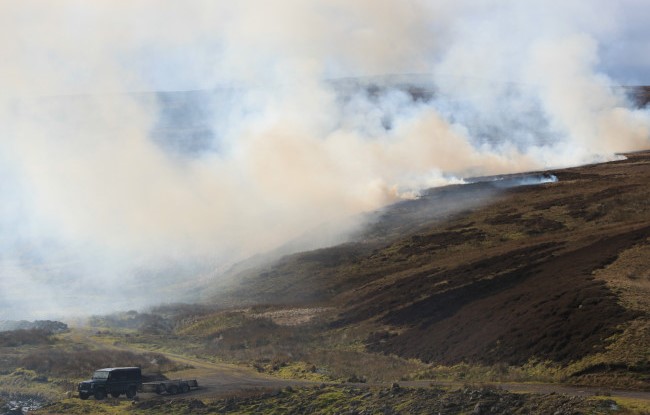
Beccy Speight, RSPB Chief Executive Officer, said: “In a climate and ecological emergency, the continued burning of precious peatlands is simply not acceptable and undermines the UK Government’s legal obligations to restore nature. The Government has long promised to end the burning of peat, it has widespread public support, and the Secretary of State, George Eustice, now needs to make good on this pledge.”
Healthy wet blanket peat bogs are home to peat-forming sphagnum mosses, cotton-grasses, and carnivorous plants, which support a diverse range of breeding birds, including breeding dunlin and golden plover. They are also a crucial carbon store. UK peatlands (in the uplands and lowlands) store an estimated 3,200 million tonnes (Mt) of carbon.
However, the RSPB says that one of the most significant pressures on these places is that they are routinely and deliberately burned, largely to support a single industry – grouse shooting.
Pat Thompson, RSPB Senior Policy Officer said: “The burning is done to ensure grouse have reemergent young shoots of heather to eat season after season. This not only directly releases carbon into the atmosphere but degrades the remaining peat – making it poorer for wildlife, less able to slow the flow of water thus increasing flood risk and reducing water quality. All these effects are felt both immediately by communities downstream and by wider society in terms of increased carbon emissions and the cost of treating water.
England’s upland peatlands are also increasingly vulnerable to changes in climate, particularly pro-longed periods of drought which dry out the surface vegetation making them vulnerable to accidental fires in spring and summer.”
Peatland in the English uplands can be legally burnt between 1 October – 15 April. Burning in the uplands is increasing with research finding a seven-fold increase in burning on peatland in
England from the 1940s to the present time with burning increasing at a rate of 11% per annum between 2001 to 2011 in Great Britain.
Dr Thompson added: “To give an idea of the scale of this issue, grouse moors in the northern uplands extend to something in the region of 2226 square kilometers. Many of these grouse moors lie within Special Areas of Conservation and Special Protection Areas, a statutory designation that describes their huge importance for wildlife on a European level. The designation restricts a range of activities in these places, and so special consent must be obtained from Natural England in order to carry out burning.
Information from Natural England suggests there are over 400 consents to burn blanket bog on grouse moors in north England’s European protected areas, covering around 950 square kilometers of the deep peat soils this precious habitat depends on. This simply must stop.”
Peat burning is also not welcome in many local communities, and the call for a ban has recently been echoed by Mayors, local councils and residents in the North of England:
Jamie Driscoll, Mayor of the North of Tyne Combined Authority, said: “Burning upland peat habitats is a destructive process. It results in greenhouse gas emissions, brings flood risks, and is damaging to wildlife. I fully support the RSPB’s campaign calling on the government to implement an immediate end to this practice.”
Andy Burnham, Mayor of Manchester, said: “Upland fires in 2018 and more recently in the dry spring this year have created significant issues in upland areas of Greater Manchester – both from an environmental and public safety perspective. We are acutely aware of the environmental impact that upland fires, whatever their cause, can have on the environment.
Recent work by Natural England, which will inform Defra’s forthcoming national peat strategy, highlighted that the 2019 Winter Hill fire alone released c. 90,000 tonnes of Carbon equivalent (tCO2e)”
Councillor Scott Patient, Lead – Climate Change and Resilience, Calderdale Metropolitan Borough Council said: “In Calderdale, we know that moorland fires have a broad range of ecological and public health impacts including degrading peatlands, releasing harmful gasses into the atmosphere and surrounding valleys, putting added pressure on our fire services (themselves stretched throughout the pandemic) and decreasing biodiversity whilst possibly contributing to flooding in communities downstream. We hope to see legislation introduced promptly to end the use of burning in the management of grouse moors. Beyond this, we will continue to work in strong strategic partnerships with small and larger landowners to further develop a complete and sustainable catchment plan to help best protect our residents and natural environment”
Cllr Rob Walker, Colne Valley Ward Councillor, Kirklees Cabinet Portfolio: Environment and Culture, said: “Whilst Kirklees Council do not own any moorland used for grouse shooting I am concerned about the damage done to biodiversity and the regeneration of healthy peat bogs by the practice of burning heather to promote the commercial rearing of grouse. I believe in working with land managers to promote more sustainable techniques that will enrich our countryside.”
Dongria Kondh Co-ordinator, Treesponsibility, and Hebden Bridge resident said: “The peatlands here on the moors above Hebden Bridge form part of the biggest carbon sinks in Britain, they are precious to our community, to wider society and for nature. They cannot be restored to full health while the burning continues. Reports that Environment Minister George Eustice is attempting to backtrack on his predecessor’s commitment to ban managed burning on peat bogs are deeply worrying. In January, this year the UK parliament’s Climate Change Committee called for an immediate cessation of rotational burning, and ignoring their report would seriously undermine the government’s credibility as hosts of the COP26 Climate conference next year. A ban needs to be implemented now.”
ENDS
There’s also some interesting commentary from Mark Avery on this topic this morning (see here)
The temporary ban on muirburn in Scotland, implemented during the Coronavirus lockdown after Andy Wightman MSP drew the Scottish Parliament’s attention to the ongoing burning of grouse moors despite there being a respiratory virus pandemic (here) has now finished and grouse moor managers are now free to set the moors alight again.

